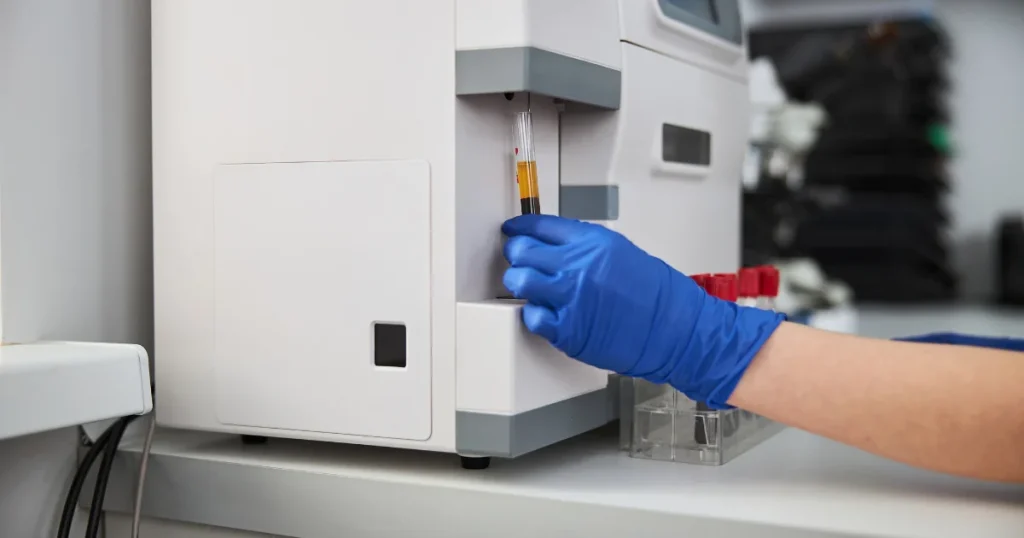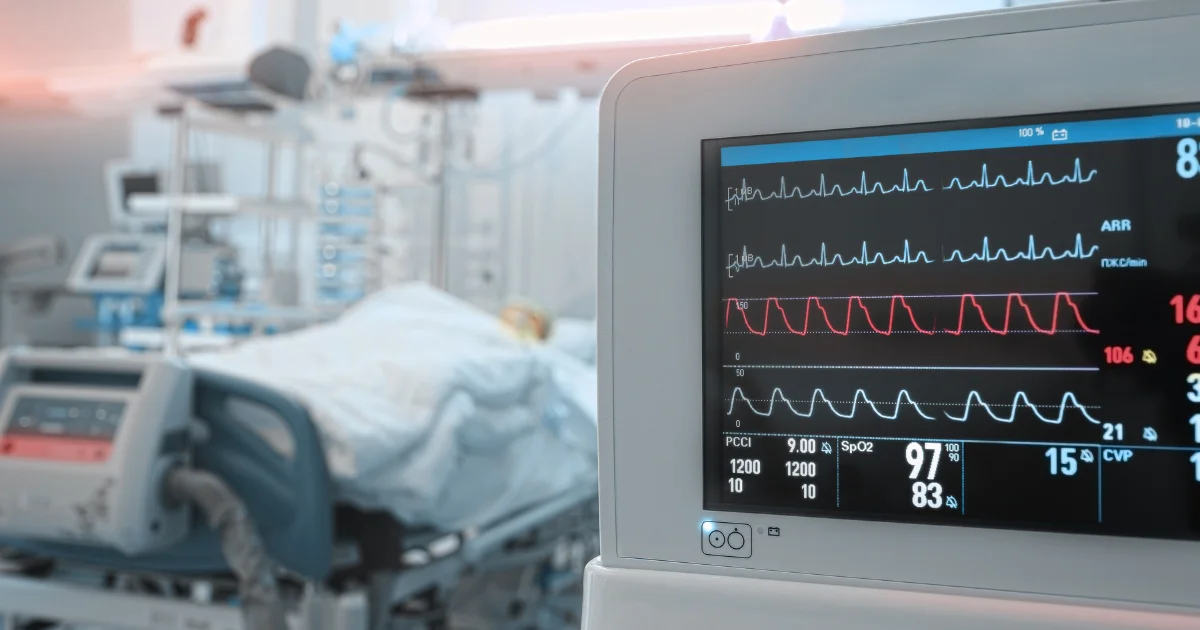Choosing the right hematology analyzer for your laboratory is a critical decision that impacts diagnostic accuracy, workflow efficiency, and overall operational costs. Selecting the right one requires careful consideration of factors like throughput, accuracy, technology, cost, and ease of maintenance. This guide will help you understand the key factors to consider when choosing the right hematology analyzer that best fits your laboratory’s needs.
Table of Contents
Understanding Hematology Analyzers
What is a Hematology Analyzer?
A hematology analyzer is a laboratory instrument used to perform complete blood counts (CBC) and detect abnormalities in blood samples. It measures parameters such as:
- Red Blood Cell (RBC) count – – Measures oxygen-carrying capacity
- White Blood Cell (WBC) count – Assesses immune response
- Hemoglobin (HGB) & Hematocrit (HCT) – Determines anemia or polycythemia
- Platelet count – Evaluates blood clotting ability
How Do Hematology Analyzers Work?
Hematology analyzers use various techniques, such as electrical impedance, flow cytometry, and light scattering, to count and differentiate blood cells. These technologies ensure accurate and precise results, aiding in the diagnosis of hematological disorders.
Also read: Medical Device Maintenance
Types of Hematology Analyzers
A. 3-Part Differential Hematology Analyzer
- Differentiates WBCs into three groups: lymphocytes, monocytes, and granulocytes
- Suitable for small to mid-sized labs with basic CBC needs
- More affordable and requires less maintenance
Best for: Small clinics, physician offices, and basic lab setups
B. 5-Part Differential Hematology Analyzer
- Differentiates WBCs into five types: lymphocytes, monocytes, eosinophils, basophils, and neutrophils
- Provides greater diagnostic accuracy
- Requires higher maintenance and uses more reagents
Best for: Hospitals, research labs, and advanced diagnostic centers
C. High-throughput & Automated Hematology Analyzers
- Capable of processing hundreds of samples per hour
- Includes automated sample loading, barcode scanning, and AI-assisted diagnostics
- Reduces human error and improves workflow efficiency
Best for: Large hospitals, reference labs, and high-volume diagnostic centers
Key Features to Consider When Choosing a Hematology Analyzer
A. Throughput & Sample Volume
- Consider the number of samples processed daily
- Small labs: Need low to moderate throughput (10–60 samples per hour)
- Large labs: Require high-throughput systems (100+ samples per hour)
B. Accuracy & Precision
- Look for analyzers with low coefficient of variation (CV%) for reliable results
- 5-part analyzers offer higher diagnostic accuracy
C. Ease of Use & Maintenance
- User-friendly interface with touchscreen controls
- Minimal daily maintenance requirements
- Availability of customer support and spare parts
D. Cost & Budget Considerations
- Compare the initial cost and long-term expenses (reagents, consumables, servicing)
- Choose a supplier that offers comprehensive support, regular maintenance, and readily available spare parts to minimize downtime.
- Leasing options or reagent rental programs can lower upfront costs
E. Reagent & Consumable Requirements
- Check for availability and cost of reagents
- Some analyzers require specific reagents, while others support multiple suppliers
F. Connectivity & Data Management
- Look for LIS (Laboratory Information System) compatibility for seamless data transfer
- USB & cloud-based storage options help with patient record management
G. After-Sales Support & Warranty
- Ensure availability of technical support and service contracts
- Extended warranties can prevent costly repairs
Technology and Analytical Capabilities

Flow Cytometry-Based Analyzers
Advanced hematology analyzers use flow cytometry to provide detailed cell analysis and improve diagnostic accuracy.
Impedance vs. Optical Scatter Techniques
- Impedance-based analyzers count cells based on changes in electrical resistance.
- Optical scatter analyzers use laser technology to analyze cell characteristics more precisely.
Choosing the Right Hematology Analyzer for Your Laboratory Size
Small Laboratories and Point-of-Care Testing
- Compact models with basic CBC capabilities
- Lower throughput (10–50 samples per hour)
Mid-Sized Laboratories
- Moderate throughput (50–100 samples per hour)
- 5-part differential capability for detailed analysis
High-Volume Clinical Laboratories
- Fully automated systems with LIS integration
- High-throughput capacity (100+ samples per hour)
Making the Right Decision
Selecting the right hematology analyzer is a crucial investment that affects diagnostic accuracy, efficiency, and cost-effectiveness. Whether you run a small clinic or a high-volume laboratory, choosing a system that aligns with your needs ensures better patient care and optimized workflow.
By evaluating factors such as technology, automation, cost, and compliance, you can make an informed choice that enhances your lab’s performance while reducing operational costs.
FAQs About Hematology Analyzers
1. What is the difference between a 3-part and a 5-part hematology analyzer?
A 3-part analyzer classifies WBCs into three types, while a 5-part analyzer provides more detailed differentiation of five types of WBCs.
2. How often do hematology analyzers need maintenance?
Routine maintenance depends on usage, but most analyzers require weekly or monthly calibration and servicing.
3. Can hematology analyzers detect blood disorders?
Yes, they can help diagnose conditions like anemia, infections, and leukemia, but further confirmatory tests may be required.
4. What are the key features to look for in a hematology analyzer?
Accuracy, throughput, ease of use, automation level, reagent cost, and LIS compatibility are critical factors.




